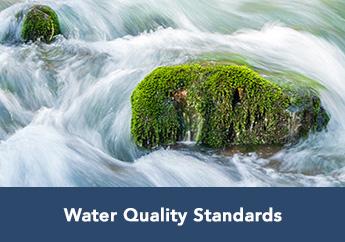
The goal of the federal Clean Water Act (CWA) is to restore and maintain the chemical, physical and biological integrity of the nation’s waters. Water quality standards are the foundation for a wide range of programs under the CWA. Water quality standards establish the water quality goals for a specific water body, or portion of that water body. For more information about federal requirements, visit the U.S. Environmental Protection Agency's Water Quality Standards: Regulations and Resources website.
Missouri’s water quality standards are defined in Code of State Regulations 10 CSR 20-7.031. These standards describe the desired condition of Missouri's water bodies and how those conditions will be protected or reached. Water quality standards contain the following core components:
- Designated use or uses of a water body
- Criteria necessary to protect the designated uses
- Antidegradation requirements
The goal for water quality standards is protecting water uses through applying criteria. The level of protection given to a stream, river or lake depends on the expected, or "designated use(s)," of that water, such as "recreation". When the department assigns designated uses to a water body, it is considered “classified” and listed in Missouri’s water quality standards. Water quality criteria are expressed as concentrations, loads or narrative statements. Antidegradation policy requires actions to maintain and protect high quality waters and existing water quality.

